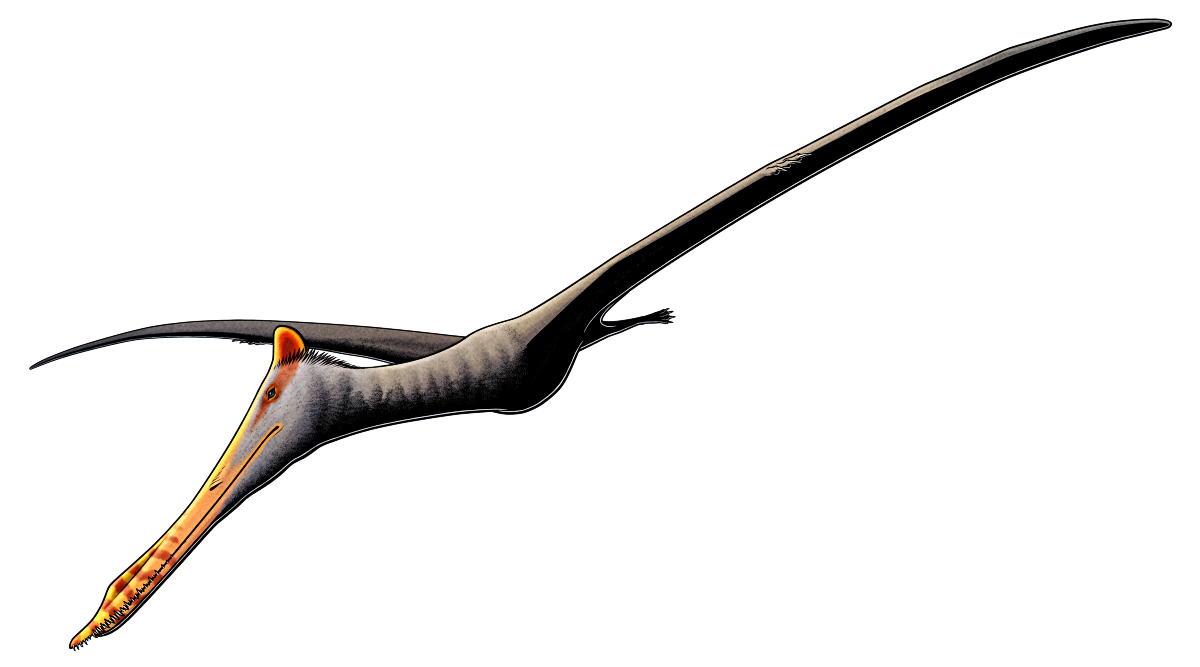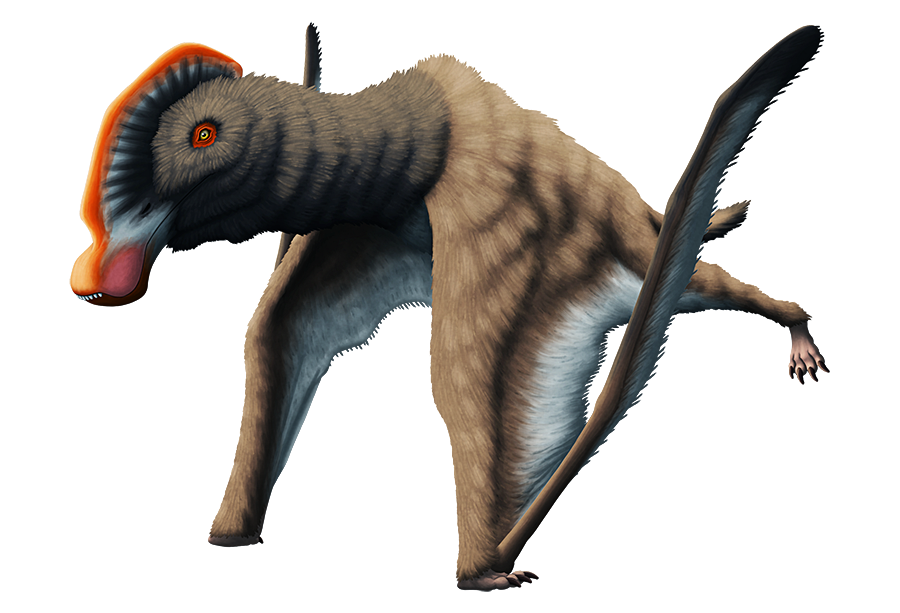Feilongus youngi was a pterosaur that lived during the early Cretaceous (~125 million years ago) in what is now northeastern China.
Known only from two skulls and a few neck vertebrae, its full body proportions are uncertain, but it’s estimated to have had a wingspan of somewhere around 2.4m (7’10”). As part of the ctenochasmatid lineage it was probably a wader specializing in snagging aquatic prey between its interlocking needle-like teeth.
It had two bony crests on its head – a long low one along its snout, and a backwards-pointing one at the very back of its skull – along with a distinct overbite at the front of its jaws. These structures are only seen in the larger of the two known specimens, suggesting that they either only developed towards full maturity or that this species was sexually dimorphic.



